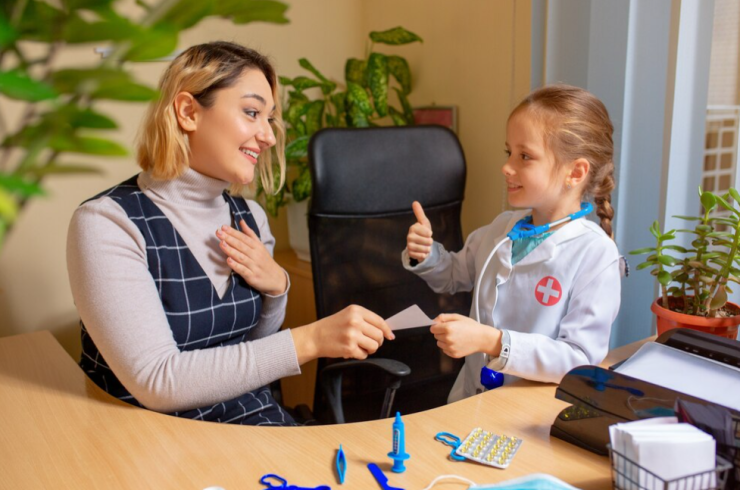It’s no secret that children with learning disabilities are harder to teach. But what can a teacher do when the student is non-verbal and doesn’t respond to conventional teaching methods? Use visual aids to teach children, of course! Visual aids are an invaluable resource for teachers because they allow students to absorb the material without committing too much effort.
Teaching Special Needs Children with visual aids can be very beneficial. But what are the benefits of using visual aids?

Why does using visual aids work for children with special needs?
Many children with special needs have difficulty learning from books, lectures, and other traditional methods of education. They may need extra support to understand new concepts and ideas. Visual aids can help make the learning experience more effective for these children.
Here are six benefits of using visual aids to teach children with special needs:
1) Visual Aids Help Children Focus Attention.
Children with attention deficit hyperactivity disorder (ADHD) or autism spectrum disorder (ASD) may have difficulty keeping their attention on one activity for an extended period of time. By using visual aids, teachers can help them focus on the lesson at hand without getting distracted by other people or events in the classroom.
2) Visual Aids Make Learning Easier.
Visual aids make it easier for students with learning disabilities to grasp new concepts and ideas because they can see what they’re learning about instead of just hearing it described verbally. For example, if a teacher wants students to learn about fractions, he might use pictures of objects divided into halves, thirds or fourths so that students can better visualize what fractional amounts look like compared to whole numbers.
3. Visual Aids Improve Comprehension.
Visual aids can help children with special needs better understand what you are teaching them. A picture is worth a thousand words! Children who have difficulty with language and auditory processing may benefit from using visual aids to learn new concepts.
4. Visual Aids Encourage Independence.
Using visual aids, such as flashcards or posters, gives children with special needs the opportunity to be independent learners by helping them practice new skills independently. This builds their self-confidence and encourages further independence in other areas of life as well.
5. Visual Aids Can Be Adapted For Any Age Group.
Visual aids work for all ages and learning levels; they can be used with infants through adults and everyone in between! They are adaptable for any age group because they can be presented in many different ways depending on the child’s ability level and need at that moment in time. For example, younger children may only require large pictures while older students may need smaller pictures that are easier to hold and manipulate in their hands.
6. Visual Aids Can Be Used In Different Settings And Contexts
Visual aids can be used in different settings and contexts to help children learn more effectively. For example, teachers may use visual aids during group lessons or when teaching one-on-one with an individual student. Teachers may also use them during field trips or when conducting science experiments in class.
7. Visual Aids Can Help Improve Memory Skills.
Children with special needs often have problems remembering things easily due to their condition or disability. However, this does not mean that they cannot learn new information; it just means that it takes them longer than others to learn new things such as schoolwork or other subjects like spelling or mathematics etc.. Therefore, by using visual aids during lessons, you will be able to improve the memory skills of these children.
Takeaway
Ultimately, you want to create a visual aid that takes into account the needs of your child and the visual perception of special children. Visual aids allow you to draw attention to details of your choosing during classroom instruction, as well as reinforce learning outside the classroom. Teachers have found visual aids to be useful at home, and during homework assignments, and have even found ways to make them fun.




